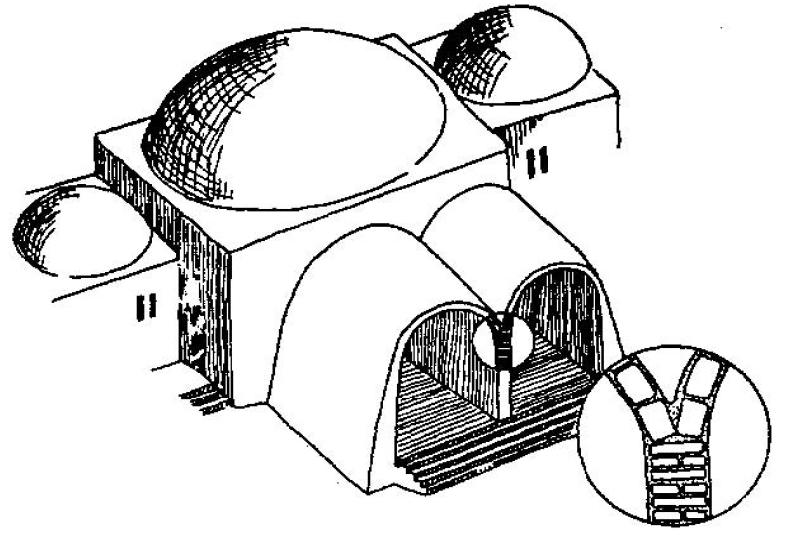COURSE INTRODUCTION
One of the oldest known partially standing earth block structures with walls is the tomb of King Khasekhemwy in Egypt which dates to about 2900 BC. Remains of Syrian “Beehive” houses built of mud blocks have been dated to about 3,700 BC. Currently, earth block homes are still constructed in many parts of the world. While much of earth home construction is done in developing countries, green building accounts for some earth home construction. This course introduces the concept of applying modern principles of soil mechanics to the ancient construction methods of earth home building. Application of modern principles and simple testing methods can increase the quality and performance of earth homes and improve the efficiency of their construction.
This course is based on the Peace Corps publication “A Handbook for Building Homes of Earth”. The techniques and methodologies described in this course document may be useful to improve the efficiency and methods of earth home construction. Some of the oldest known methods of building permanent dwellings, and are some of the most cost-effective methods of construction of permanent dwellings use earth as the main building material.
Research and testing by the Texas A&M Research Foundation, at College Station, TX, was used to quantify and develop simple testing methods to improve quality and efficiency of earth home construction methods. The research included gathering information of earth home construction from a wide range climates and ages of structures from around the world. The research and improved methods were adopted by the US Peace Corps in their handbook for teaching and constructing earth homes in developing countries.
This course makes a brief citation of the history of earth homes, summarizes a broad study of current earth home construction methods and introduces recommended best practices for planning and constructing earth homes.
This course includes a multiple-choice quiz at the end and is intended to provide 9 hours of professional development.
LEARNING OBJECTIVES
At the conclusion of this course, the student will have learned or been exposed to the following concepts pertaining to earth home construction:
• Site Selection
• Site Preparation
• Construction Layout
• Foundation Types
• Footing Depth, Size and Materials
• Footing Width Determination
• Mix Design for Concrete Footings
• Foundation Walls
• Foundation Wall Types (Concrete, Masonry or Stone)
• Adobe Blocks
• Rammed Earth
• Pressed Blocks
• Wattle and Daub
• The Cob Method
• Suitable Soil Types for Earth Home Construction
• Soil Sampling and Classification
• Eight Field Tests for Determining Soil Suitability
• Three Field Tests to Measure Quality of Adobe Blocks
• Soil Stabilization – Eight Most Common Methods
• Water Proofing – Five Most Common Methods
• Preparation for Soil Mixing
• Hand Mixing
• Mechanical Mixing
• Adobe Block Machines
• Curing Adobe Blocks
• Quality Control of Adobe Blocks
• Building the Walls
• Mortar for Adobe Blocks
• Earthquake Designs
• Rammed Earth Walls
• Building Forms for Rammed Earth Walls
• Door and Window Openings for Rammed Earth Walls
• Roofs for Earth Homes
• Floors for Earth Homes – Tile, Tamped or Rammed Earth Floors
• Surface Coatings for Earth Homes
• Cost Analysis of Plaster, Slurries, Paint and Special Chemicals




